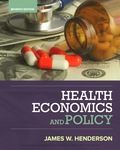Government Intervention Programs Analysis-
Governments address inefficiency through intervening in markets (Zhao, 2017). In an optimally
effective market, wealth is appropriately allocated. However, resources are scarce in inefficient
markets. Governments try to combat such market inequalities. This paper will analyze
government intervention programs, the market failure leading up to the interventions, and give
Recommendations whether the program should be continued or not.
Governments address inefficiency through intervening in markets (Zhao, 2017). In an optimally
effective market, wealth is appropriately allocated. However, resources are scarce in inefficient
markets. Governments try to combat such market inequalities. This paper will analyze
government intervention programs, the market failure leading up to the interventions, and give
Recommendations whether the program should be continued or not.
Governments address inefficiency through intervening in markets (Zhao, 2017). In an optimally
effective market, wealth is appropriately allocated. However, resources are scarce in inefficient
markets. Governments try to combat such market inequalities. This paper will analyze
government intervention programs, the market failure leading up to the interventions, and give
Recommendations whether the program should be continued or not.
Governments tries to address inefficiencies through intervening in the market sector. In an
optimally effective market, wealth is appropriately allocated. However, resources are scarce in
inefficient markets. Governments try to combat such market inequalities. This paper will analyze
government intervention programs such as the earned income tax credit (EITC) and the child tax
credit, the market failure leading up to the interventions, and also give recommendations on
whether the programs should be continued or not.
The earned income tax credit (EITC) and the child tax credit serves as crucial government initiatives which are aimed at tackling the economic disparity, whilst providing assistance to families with low to moderate incomes within the U.S. Although, these programs face many obstacles, such as, elevated mistakes and fraud rates; yet, it has successfully diminished poverty by a great margin, augmented workers engagement and improved family’s welfare. These programs main objectives aim to rectify market flaws by promoting a more equitable allocation of resources and opportunities. Although, the EITC and the child tax credit have











 Microeconomics: Private and Public Choice (MindTa...EconomicsISBN:9781305506893Author:James D. Gwartney, Richard L. Stroup, Russell S. Sobel, David A. MacphersonPublisher:Cengage Learning
Microeconomics: Private and Public Choice (MindTa...EconomicsISBN:9781305506893Author:James D. Gwartney, Richard L. Stroup, Russell S. Sobel, David A. MacphersonPublisher:Cengage Learning




